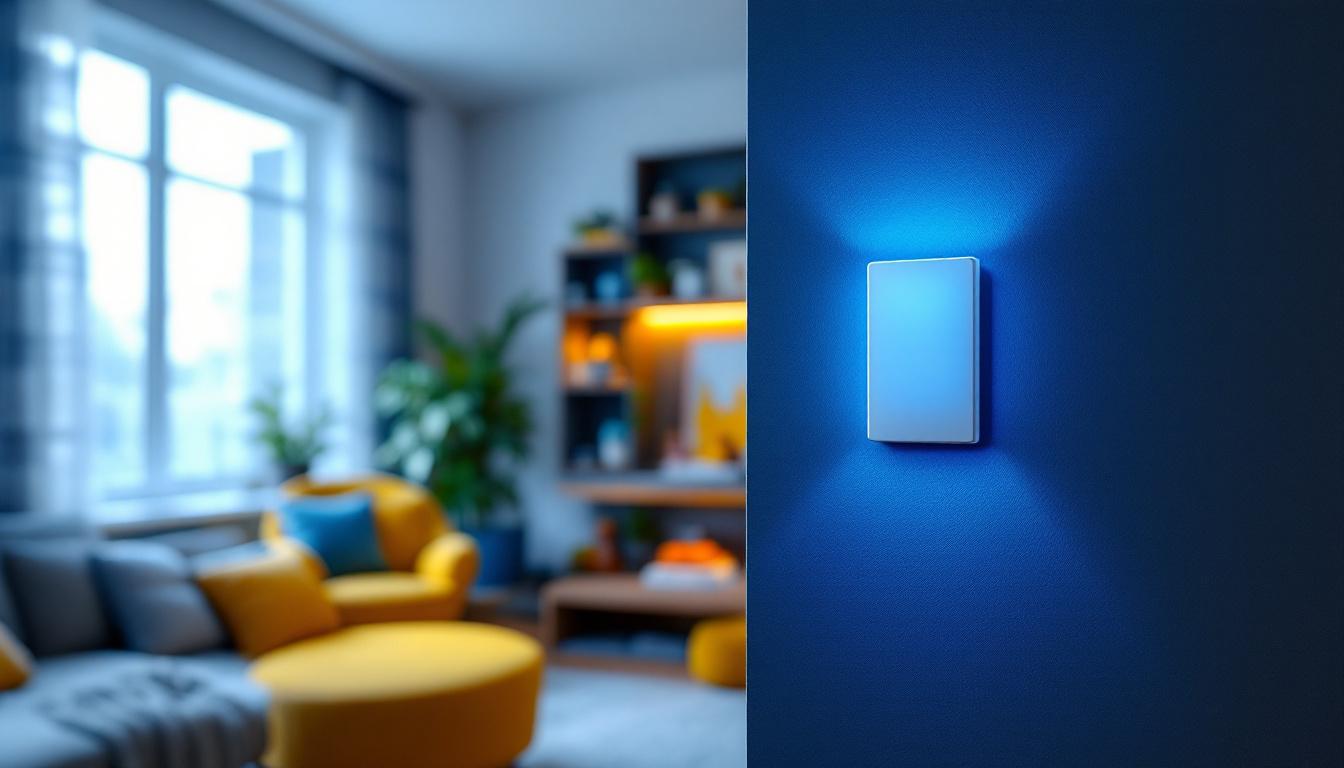
The commercial lighting sector has undergone a significant transformation with the advent of LED technology. LED lighting offers unparalleled energy efficiency, longer lifespan, and reduced maintenance costs compared to traditional lighting solutions such as fluorescent and incandescent bulbs. For lighting contractors, this shift presents both opportunities and challenges.
As businesses increasingly prioritize sustainability and cost savings, the demand for LED lighting installations continues to grow. However, successfully navigating this evolving landscape requires contractors to understand the technical, logistical, and client-related hurdles that come with LED projects.
One of the most compelling advantages of LED lighting is its ability to significantly reduce energy consumption, which can lead to substantial cost savings over time. For instance, LED lights use up to 75% less energy than incandescent bulbs, making them an attractive option for businesses looking to lower their utility bills. Additionally, many governments and organizations offer incentives and rebates for companies that switch to LED lighting, further enhancing the financial appeal. This shift not only benefits the bottom line but also contributes to a company’s environmental goals, as reduced energy usage translates to a smaller carbon footprint.
Moreover, the versatility of LED technology allows for a wide range of applications in commercial settings. From retail spaces that benefit from adjustable color temperatures to create the right ambiance, to industrial environments where durability and brightness are paramount, LEDs can be tailored to meet diverse needs. The ability to integrate smart technology with LED systems also opens up new possibilities for energy management and automation, allowing businesses to optimize their lighting based on occupancy and natural light levels. As a result, lighting contractors must stay informed about the latest advancements in LED technology and smart lighting solutions to provide their clients with the most effective and innovative options available.
One of the primary challenges contractors face is the technical complexity involved in selecting the right LED products. Unlike traditional lighting, LEDs come with a variety of specifications including color temperature, lumen output, beam angle, and compatibility with dimmers or control systems.
Choosing the wrong product can lead to poor lighting quality, customer dissatisfaction, and costly rework. Moreover, the rapid pace of LED technology innovation means contractors must stay informed about the latest advancements to recommend the best solutions. This requires ongoing education and training, as well as a keen awareness of emerging trends such as smart lighting systems that integrate with IoT devices. The ability to navigate these advancements not only enhances the contractor’s credibility but also positions them as a valuable resource for clients seeking to optimize their lighting solutions.
Many commercial buildings require retrofitting existing lighting systems with LED fixtures. This process can be complicated by outdated wiring, incompatible fixtures, or architectural constraints. Lighting contractors must often customize solutions to fit unique environments, which can increase project timelines and costs.
Additionally, LED lighting sometimes requires specialized installation techniques, such as thermal management to prevent overheating, which may be unfamiliar to contractors accustomed to traditional systems. The integration of advanced control systems, such as occupancy sensors and daylight harvesting technologies, further complicates the installation process. Contractors must not only be adept at physical installation but also at programming these systems to ensure optimal performance and energy efficiency. This multifaceted approach demands a high level of expertise and adaptability, which can be a significant hurdle in project execution.
Clients may not fully understand the benefits or limitations of LED lighting, leading to unrealistic expectations. For example, some clients expect immediate and dramatic energy savings without considering factors like occupancy patterns or fixture placement.
Lighting contractors must take on the role of educators, explaining the nuances of LED technology, potential upfront costs, and the long-term advantages. Clear communication is essential to ensure client satisfaction and project success. This educational aspect often involves providing detailed case studies or simulations that illustrate the expected performance and savings over time. By engaging clients in this manner, contractors can foster a collaborative relationship that not only builds trust but also empowers clients to make informed decisions about their lighting investments.
Commercial lighting projects often need to comply with local building codes, energy efficiency standards, and safety regulations. Navigating these requirements can be complex, especially as they vary by jurisdiction.
On the positive side, many regions offer incentives or rebates for LED upgrades, but accessing these programs requires careful documentation and adherence to specific criteria. Contractors must be diligent in managing these aspects to maximize benefits for their clients. This often involves staying updated on changing regulations and incentive programs, which can be a full-time job in itself. Furthermore, contractors may need to prepare detailed reports and analyses to demonstrate compliance and justify the financial benefits of the upgrades, ensuring that clients receive the maximum possible return on their investment. This level of attention to detail not only streamlines the project but also enhances the contractor’s reputation as a knowledgeable and reliable partner in the lighting industry.
To keep pace with evolving LED technologies, lighting contractors should prioritize ongoing education. This can include manufacturer-led training sessions, industry certifications, and attendance at trade shows or seminars.
By deepening their technical knowledge, contractors can confidently recommend appropriate products, troubleshoot issues efficiently, and differentiate themselves in a competitive market. Moreover, engaging in workshops and online courses can expose contractors to innovative techniques and emerging trends, such as smart lighting systems and energy-efficient designs. This not only enhances their skill set but also empowers them to offer cutting-edge solutions that meet the diverse needs of their clients.
Modern lighting design software allows contractors to create detailed simulations of lighting layouts before installation. These tools help optimize fixture placement, ensure compliance with lighting standards, and predict energy savings.
Utilizing such software minimizes guesswork, reduces errors, and enhances client presentations by providing visualizations of the final outcome. Additionally, many of these software programs come equipped with features that allow for real-time adjustments based on client feedback, enabling a collaborative design process. By showcasing various scenarios and lighting effects, contractors can better illustrate the benefits of LED solutions, making it easier for clients to envision the end result and make informed decisions.
Effective communication is critical to managing client expectations. Contractors should provide clear proposals that outline project scope, timelines, costs, and anticipated benefits. Including case studies or testimonials can also build trust.
Regular updates during the project and post-installation support further reinforce client confidence and satisfaction. Furthermore, establishing a feedback loop where clients can voice their concerns or suggestions can lead to improved service delivery. By actively listening and responding to client needs, contractors can foster long-term relationships that may result in repeat business and referrals, ultimately enhancing their reputation in the industry.
Establishing relationships with reputable LED suppliers ensures access to high-quality products, technical support, and warranty coverage. Contractors should vet suppliers carefully and consider factors such as product certifications, lead times, and after-sales service.
Strong partnerships can also facilitate training opportunities and collaborative problem-solving. Additionally, suppliers often provide valuable insights into market trends and upcoming technologies, which can be advantageous for contractors looking to stay ahead of the curve. By maintaining open lines of communication with suppliers, contractors can also gain access to exclusive promotions or early releases, further enhancing their competitive edge.
Contractors should designate team members or use specialized consultants to monitor regulatory changes and incentive offerings. Staying current enables timely compliance and helps clients take advantage of financial benefits.
Documenting projects meticulously is essential for rebate applications and audits. This diligence not only ensures compliance but also builds a solid foundation for future projects. Furthermore, understanding the nuances of local and national regulations can position contractors as knowledgeable resources for clients, allowing them to navigate the complexities of energy efficiency standards and incentive programs effectively. By being proactive in this area, contractors can enhance their service offerings and contribute to the overall sustainability goals of their clients.
A mid-sized office building underwent a complete lighting retrofit, replacing outdated fluorescent fixtures with LED panels and smart controls. The lighting contractor conducted a thorough audit, designed a customized lighting plan, and managed the installation with minimal disruption.
The result was a 55% reduction in energy consumption, improved lighting quality, and enhanced occupant comfort. The client also qualified for local utility rebates, reducing the payback period significantly.
A retail chain sought to improve product visibility and create a welcoming atmosphere. The contractor recommended adjustable LED spotlights with tunable color temperatures to highlight merchandise effectively.
The installation not only boosted sales by enhancing product presentation but also cut lighting energy costs by nearly 40%. The project demonstrated how LED lighting can directly impact business outcomes beyond energy savings.
The commercial LED lighting market continues to evolve with innovations such as IoT-enabled smart lighting systems, human-centric lighting designs, and integration with building automation platforms. These advancements offer contractors new avenues to add value and differentiate their services.
For instance, smart lighting can adapt to occupancy and daylight levels, further optimizing energy use. Human-centric lighting focuses on improving occupant well-being by mimicking natural light patterns, which is gaining traction in office and healthcare environments.
Lighting contractors who embrace these trends and invest in relevant skills and technologies will be well-positioned to capitalize on emerging opportunities.
LED lighting represents a transformative opportunity for commercial lighting contractors, but it comes with distinct challenges. By understanding technical complexities, refining installation practices, educating clients, and staying abreast of regulations and incentives, contractors can overcome these obstacles effectively.
Moreover, leveraging advanced tools, fostering strong supplier relationships, and embracing future trends will enable contractors to deliver superior solutions that meet client needs and drive business growth. The future of commercial lighting is bright for those prepared to adapt and innovate.
Ready to elevate your commercial lighting projects and overcome the challenges discussed in this article? LumenWholesale is here to support you every step of the way. Our spec-grade lighting products combine quality with unbeatable wholesale prices, ensuring you can deliver exceptional value to your clients. Say goodbye to local distributor markups and hello to a vast selection of industry-standard lighting solutions. With the added convenience of free shipping on bulk orders, LumenWholesale is your go-to source for premium lighting without the premium price tag. Don’t compromise on quality or cost—discover the best value in wholesale lighting today and light up your business with success.

Discover how cabinet LED lighting is revolutionizing the lighting industry, offering contractors innovative solutions for efficiency, design flexibility, and energy savings.

Discover essential tips and insights for lighting contractors on selecting and installing LED light switches.

Discover essential insights into downlight lighting solutions tailored for contractors.

Discover the essentials of solar path lighting compliance with our comprehensive guide tailored for lighting contractors.